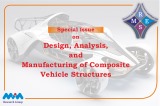Research Article
Numerical analysis of the primary and secondary structural dynamic interaction effects on elastic floor response spectra
Madhavi Latha Annamdasu1, Surya Prakash Challagulla1, Vyshnavi Pesaralanka1, Ismail Hossain2, Daniel Cruze3
1Dept. of Civil Eng., Koneru Lakshmaiah Education Foundation (Deemed to be University), Vaddeswaram, Guntur, 522302, India
2School of Natural Sciences and Mathematics, Ural Federal University, Yekaterinburg, 620 000, Russia
3Dept. of Civil Eng., Hindustan Institute of Technology and Science, India
Keywords
Abstract
Primary structure;
Secondary structure;
Tuning ratio;
Dynamic interaction;
Floor response spectrum;
Component dynamic amplification factor
In modern seismic design, the assessment of seismic behavior in secondary structures relies on the evaluation of the primary structure's acceleration at the support of the secondary structure. To enable effective secondary structure design, a thorough understanding of the interaction between the primary and secondary structures is essential. This article conducts an analysis based on parametric data, delving into the dynamic interaction between these structures. In this study, both the elastic primary and secondary structures are represented as single-degree-of-freedom systems. The governing equations of motion for both the coupled and uncoupled systems are derived and solved using the numerical method. Subsequently, the floor response spectrum (FRS) is computed for both coupled and uncoupled configurations. This investigation focuses on the impact of three crucial parameters: the tuning ratio (T_r), the mass ratio (μ), and the damping ratio (ξ_s) on the FRS. The analytical findings reveal that dynamic interaction does not significantly affect the FRS when the mass ratio is very low, at 0.1%. However, for a range of 0.8 ≤ T_r ≤ 1.2, dynamic interaction has a substantial influence on the FRS. Additionally, this study underscores that lower damping ratios in the secondary structure result in a more pronounced coupling effect on the FRS.
© 2023 MIM Research Group. All rights reserved.


